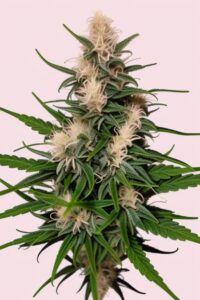A Pink Lemonade—sounds refreshing. But we’re not talking about your grandma’s summer drink here. This is the Pink Lemonade cannabis strain, a vibrant, flavorful, and potent variety that’s been turning heads (and taste buds) in the cannabis community. Whether you’re a seasoned grower or a green-thumbed newbie, understanding this strain’s quirks and charms is key to cultivating it successfully.
So, what’s the big deal about Pink Lemonade? Well, not just its eye-catching name or citrusy aroma will knock your socks off. This strain has a fascinating backstory, a unique genetic makeup, and a set of growing requirements that’ll keep you on your toes. Stick around, and we’ll dive into everything you pink lemonade pink need to know to grow this beauty like a pro.
Understanding the Pink Lemonade Strain
A Feast for the Senses
First, discuss what makes Pink Lemonade stand out in a sea of cannabis strains. Picture this: dense, resin-coated buds with hues of green, purple, and, you guessed it, pink. It’s like a psychedelic sunset in pink lemon strain plant form. And the smell? A zesty, lemony aroma with a hint of sweetness will make Vacuumed Sealed Weed your mouth water.
The Genetic Breakdown
Pink Lemonade is a hybrid strain, but don’t let that fool you—it leans heavily on its sativa side. It’s the lovechild of two legendary strains: Purple Kush and Lemon Skunk. This genetic combo gives it a balanced yet uplifting high, perfect for those who want to stay functional while enjoying a euphoric buzz.
THC and CBD Content
When it comes to potency, Pink Lemonade doesn’t mess around. With THC levels hovering around 20-25%, it’s a strong contender for those seeking a powerful experience. CBD content, on the other chips ahoy strain hand, is relatively low, making it more of a recreational strain than a medicinal one. But hey, don’t write it off just yet—its effects can still work wonders for stress and mood disorders.
Growing Conditions for Pink Lemonade
Climate and Temperature
If you’re thinking of growing Pink Lemonade, you’ll need to channel your inner Goldilocks—not too hot or cold, but just right. This strain thrives in a Mediterranean-like climate, with temperatures between 70-85°F (21-29°C). Too much heat and your plants might throw a fit; too cold, they’ll sulk.
Soil and Nutrients
Pink Lemonade isn’t too picky about soil, but it does have a soft spot for well-draining, nutrient-rich mixes. Think loamy soil with a pH between 6.0 and 7.0. As for nutrients, this strain has a hearty appetite, especially during the vegetative stage. A balanced N-P-K (nitrogen, phosphorus, potassium) fertilizer will keep it happy and thriving.
Pot Sizes and Growing Mediums
Whether you’re growing indoors or outdoors, pot size matters. For indoor growers, 5-gallon pots are a safe bet. Outdoors, you can go bigger—think 10-gallon pots or even directly in the ground. As for growing mediums, soil is the classic choice, but coco coir and hydroponics can work wonders if you’re feeling adventurous.
Germination and Seedling Stage
Germination Tips
Getting your Pink Lemonade seeds to sprout is like waking up a sleeping beauty—it takes patience and care. Start by soaking your seeds in water for 24 hours, then transfer them to a damp paper towel. Keep them warm (around 70-80°F) and in the dark, and within a few days, you should see tiny taproots emerging.
Seedling Care
Once your seeds have sprouted, it’s time to baby them. Keep them under gentle light (fluorescent or LED works great) and water them sparingly—overwatering is the kiss of death for seedlings. Humidity is your best friend at this stage, so aim for 65-70% relative humidity to keep those little guys happy.
Vegetative Stage Care
Nutrient Needs
During the vegetative stage, Pink Lemonade is like a teenager—it’s growing like crazy and needs plenty of fuel. Nitrogen is the show’s star here, so ensure your fertilizer has a higher N ratio. But don’t go overboard—too much of a good thing can lead to nutrient burn.
Training Techniques
Want to maximize your yield? Train your plants. Low-stress training (LST) is a favourite: gently bend and tie down branches to create an even canopy. If you’re bold, try topping or filming to encourage bushier growth. Just remember, patience is key!
Pest and Disease Watch
Pink Lemonade is relatively resilient, but it’s not invincible. Watch for common pests like spider mites and aphids and signs of mold or mildew. Prevention goes a long way, so keep your grow area clean and well-ventilated.

Flowering Stage and Pink Lemon Bundles
Transitioning to Flowering
After 4-6 weeks of vegetative growth, it’s time to flip the switch. Reduce the light cycle to 12 hours on and 12 hours off to trigger flowering. This is when the magic happens—your plants will start producing those gorgeous pink lemon bundles (aka buds) that give this strain its name.
Managing Bud Formation
You’ll notice a sweet, citrusy aroma filling the air as your buds develop. This is also when your plants are most vulnerable, so keep a close eye on humidity levels (aim for 40-50%) to prevent mould. And don’t forget to support those heavy branches—they’ll thank you later.
Effects of Pink Lemonade Strain
The High
Pink Lemonade is like a shot of espresso for your brain—uplifting, energizing, and perfect for daytime use. It’s great for socializing, creative projects, or just chilling with friends. But be warned: too much, and you might lose yourself in thought (or the fridge).
Medical Benefits
While it’s not a high-CBD strain, Pink Lemonade’s mood-boosting effects can help with anxiety, depression, and stress. Some users also report relief from mild pain and fatigue.
Harvesting Pink Lemonade
Signs of Readiness
When those trichomes turn milky white with a hint of amber, it’s gone time. Use a magnifying glass to check, and don’t rush it—patience pays off in potency.
Cutting and Trimming
Harvesting is an art. Use sharp scissors to cut your buds, then trim away excess leaves. It’s tedious work, but the result is worth it.
Curing and Storing Pink Lemonade Weed
Curing Process
Curing is like fine wine ageing—it enhances flavour, aroma, and potency. Store your buds in glass jars, opening them daily to release moisture. After 2-4 weeks, you’ll have a smooth, flavorful product.
Storage Tips
Keep your cured buds in a cool, dark place. Avoid plastic bags, which can trap moisture and ruin your hard work.
Conclusion
Growing Pink Lemonade is a journey, but what a rewarding one! With the right care and attention, you’ll be rewarded with a strain that’s as delightful to grow as it is to enjoy. So, roll up your pink lemonaid strain sleeves, get your hands dirty, and don’t be afraid to experiment. After all, the best part of growing is sharing your success (and your stash) with friends. Happy growing!


